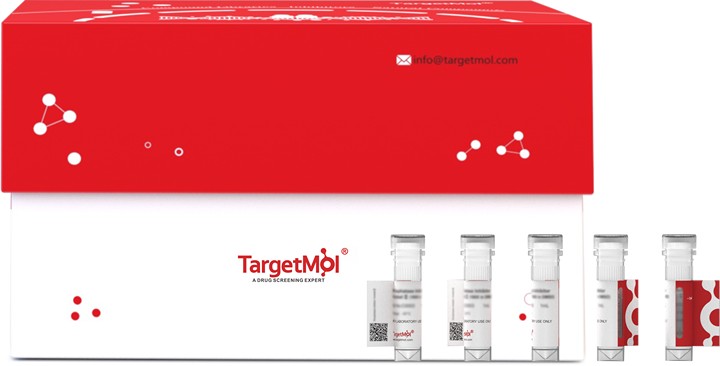 Your shopping cart is currently empty
Your shopping cart is currently empty
CLEC2D Protein, Mouse, Recombinant (His)
C-type lectin domain family 2, member D (CLEC2D) is implicated in the immune response. Sensing tissue damage is an ancient function of immune cells that is central to the regulation of inflammation, tissue repair, and immunity. The C-type lectin receptor Clec2d as a sensor of cell death, which directly detects histones released during necrosis and thus contributes to inflammation and immunopathology. The Clec2d pathway may also be exploited to favor a pro-inflammatory anti-tumor response. And tumor cells can show reduced global levels of histone modification, which may favor Clec2d sensing. The contrasting expression of CLEC2D in HIV infection and pre-eclampsia is demonstrative of the immunosuppressive and pro-inflammatory roles of the respective pathologies.

CLEC2D Protein, Mouse, Recombinant (His)
| Pack Size | Price | USA Warehouse | Global Warehouse | Quantity |
|---|---|---|---|---|
| 5 μg | $55 | 7-10 days | 7-10 days | |
| 10 μg | $86 | 7-10 days | 7-10 days | |
| 20 μg | $137 | 7-10 days | 7-10 days | |
| 50 μg | $262 | 7-10 days | 7-10 days | |
| 100 μg | $496 | 7-10 days | 7-10 days | |
| 200 μg | $989 | 7-10 days | 7-10 days | |
| 500 μg | $2,420 | 7-10 days | 7-10 days | |
| 1 mg | $3,630 | 7-10 days | 7-10 days |
Product Information
| Biological Activity | Activity has not been tested. It is theoretically active, but we cannot guarantee it. If you require protein activity, we recommend choosing the eukaryotic expression version first. |
| Description | C-type lectin domain family 2, member D (CLEC2D) is implicated in the immune response. Sensing tissue damage is an ancient function of immune cells that is central to the regulation of inflammation, tissue repair, and immunity. The C-type lectin receptor Clec2d as a sensor of cell death, which directly detects histones released during necrosis and thus contributes to inflammation and immunopathology. The Clec2d pathway may also be exploited to favor a pro-inflammatory anti-tumor response. And tumor cells can show reduced global levels of histone modification, which may favor Clec2d sensing. The contrasting expression of CLEC2D in HIV infection and pre-eclampsia is demonstrative of the immunosuppressive and pro-inflammatory roles of the respective pathologies. |
| Species | Mouse |
| Expression System | HEK293 Cells |
| Tag | N-6xHis |
| Accession Number | Q91V08 |
| Synonyms | Osteoclast inhibitory lectin,Ocil,Lectin-like transmembrane protein,C-type lectin-related protein B,C-type lectin domain family 2 member D,Clr-b,Clrb,Clec2d |
| Amino Acid | Leu63-Ser207 |
| Construction | Leu63-Ser207 |
| Protein Purity | Greater than 95% as determined by reducing SDS-PAGE. (QC verified) |
| Molecular Weight | 24-32 KDa (reducing condition) |
| Endotoxin | < 0.1 ng/µg (1 EU/µg) as determined by LAL test. |
| Formulation | Lyophilized from a solution filtered through a 0.22 μm filter, containing PBS, pH 7.4. |
| Reconstitution | Reconstitute the lyophilized protein in distilled water. The product concentration should not be less than 100 μg/ml. Before opening, centrifuge the tube to collect powder at the bottom. After adding the reconstitution buffer, avoid vortexing or pipetting for mixing. |
| Stability & Storage | Lyophilized powders can be stably stored for over 12 months, while liquid products can be stored for 6-12 months at -80°C. For reconstituted protein solutions, the solution can be stored at -20°C to -80°C for at least 3 months. Please avoid multiple freeze-thaw cycles and store products in aliquots. |
| Shipping | In general, Lyophilized powders are shipping with blue ice. Solutions are shipping with dry ice. |
| Research Background | C-type lectin domain family 2, member D (CLEC2D) is implicated in the immune response. Sensing tissue damage is an ancient function of immune cells that is central to the regulation of inflammation, tissue repair, and immunity. The C-type lectin receptor Clec2d as a sensor of cell death, which directly detects histones released during necrosis and thus contributes to inflammation and immunopathology. The Clec2d pathway may also be exploited to favor a pro-inflammatory anti-tumor response. And tumor cells can show reduced global levels of histone modification, which may favor Clec2d sensing. The contrasting expression of CLEC2D in HIV infection and pre-eclampsia is demonstrative of the immunosuppressive and pro-inflammatory roles of the respective pathologies. |
Dose Conversion
Calculator
Tech Support
| Size | Quantity | Unit Price | Amount | Operation |
|---|

Copyright © 2015-2025 TargetMol Chemicals Inc. All Rights Reserved.



